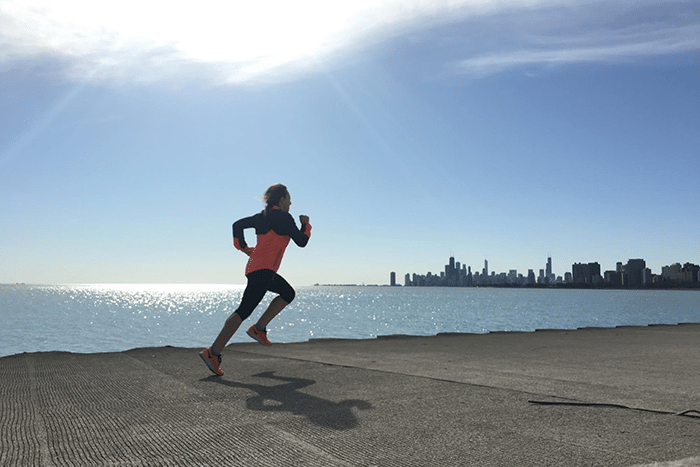How Not Running Might Just Help You Hit Your Running Goals
 Let me start this post by saying I am not an awesome runner. If you’re looking for pro runner tips, I strongly suggest you read anything over in the Kristen Geil section. She is a rockstar.
Let me start this post by saying I am not an awesome runner. If you’re looking for pro runner tips, I strongly suggest you read anything over in the Kristen Geil section. She is a rockstar.
But, like anyone who loves fitness, running has managed to slowly creep is way into my routine for the last couple of years. Satisfied that I could finally run a 5K without it feeling like a huge accomplishment (it took me many years to get to that point), last summer I decided to train for a 10K. I followed a Hal Higdon training program to the T, set a goal I thought was feasible and … failed miserably.
While I finished a 10K in a training run, on race day I got terrible cramps around mile 3, walked for large parts of the back half and finished almost 7 minutes over my aggressive goal (and almost 2 minutes over my “easy” goal). I was so annoyed with myself that for the rest of the year I limited running to days when I needed either stress release or I was visiting a new city and wanted to explore its running trails.
And then Chicago winter hit, which was the perfect excuse to totally stop running and focus on cross-training. On the first nice day of the year (by nice, I mean above freezing weather with 50 mph winds), I went for my first real run in months and, to my surprise, ran the fastest mile and 3K of my life, even though I felt like I was running casually (against gale-force winds). A few weeks later, I came within five seconds of the 10K goal that eluded me after all that training last summer.
So why did my goals get so much easier when I had basically stopped “training” to hit them? How did cross-training make me better at running than following a prescribed course for running? A big piece was definitely the stress of it. As a new runner, races can be very intimidating. I’m incredibly competitive, and was hard on myself when I wasn’t achieving my interim goals throughout race training. In reality, I wasn’t familiar enough with training for a race to set realistic goals for myself. In cross-training, I could push myself to feel like I was working hard, without getting upset if I wasn’t logging sub-9:00 miles. It reminded me that working out is FUN, not just work.
Cross-training also pushed me to be stronger. I like to think about speed in running two ways – how quickly your feet move, and how long your stride is. Lou Centeno, owner of Fit-Results in the South Loop once told me, watch Usain Bolt run. Sure, his feet move quickly, but not so fast that he looks like Road Runner. Instead, he’s pushing off the ground with each step so forcefully that he’s pushing himself farther than anyone else (More on stride-length from Runner’s World here).
Every squat or stroke on the rower during cross-training helps to build quads, glutes and hamstrings that not only lengthen my stride but make it easier to keep pace for longer. Hours spent in the gym have also increased my endurance, so that I can enjoy running instead of thinking about how much farther I have to go.
While I’d never advocate that you stop traditional running programs altogether – they’re a tried-and-true way to train for your races – take the built-in cross-training days seriously. And if you’re not having fun with your scheduled runs, skip them for a group training class that you really love. It just might help you hit your big goals.
How do you use cross-training to prepare for races?












